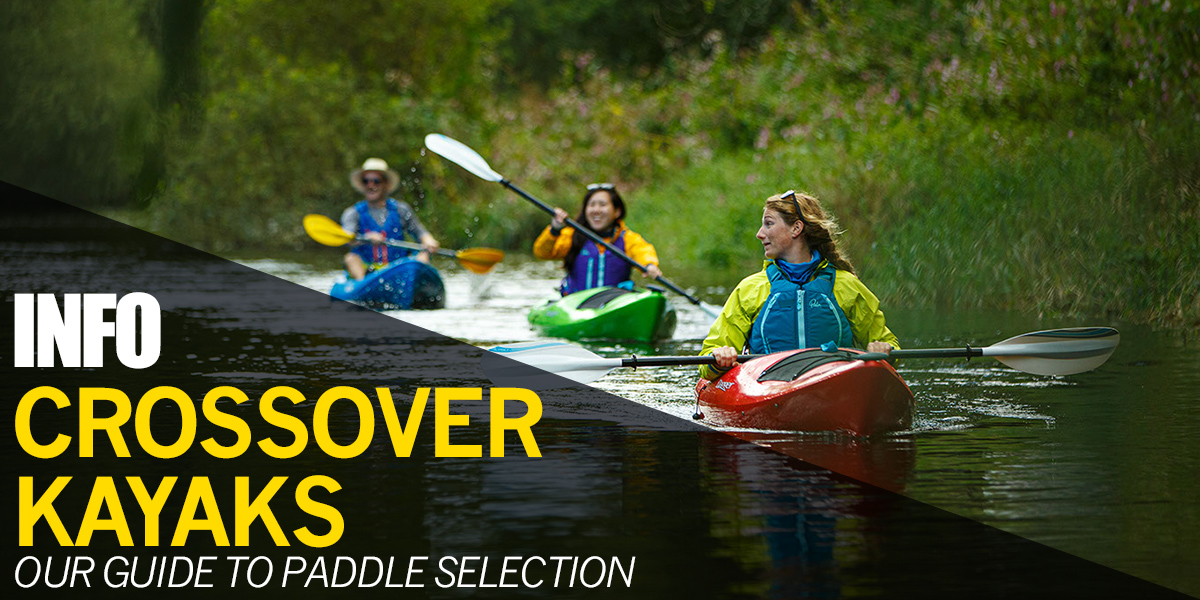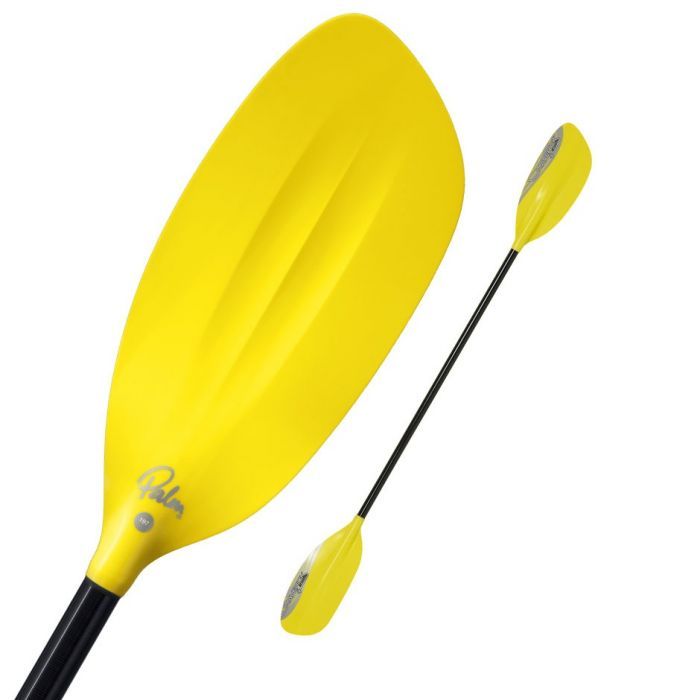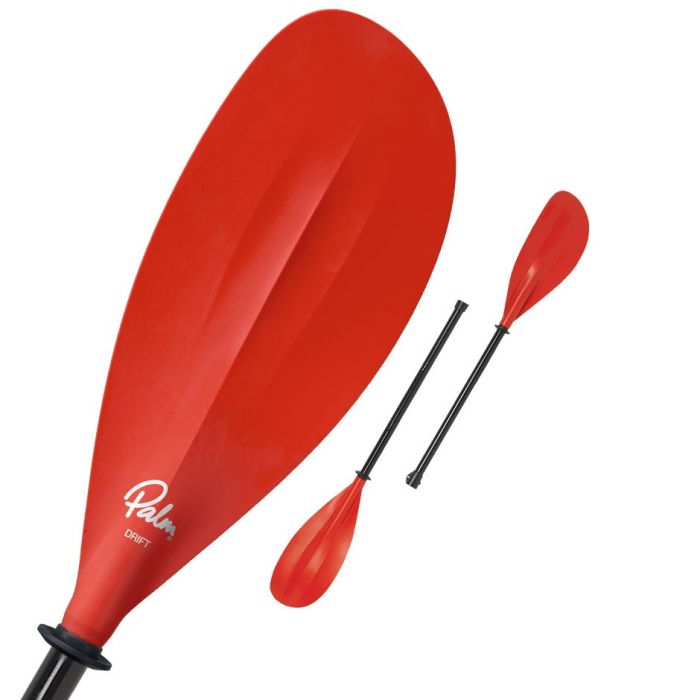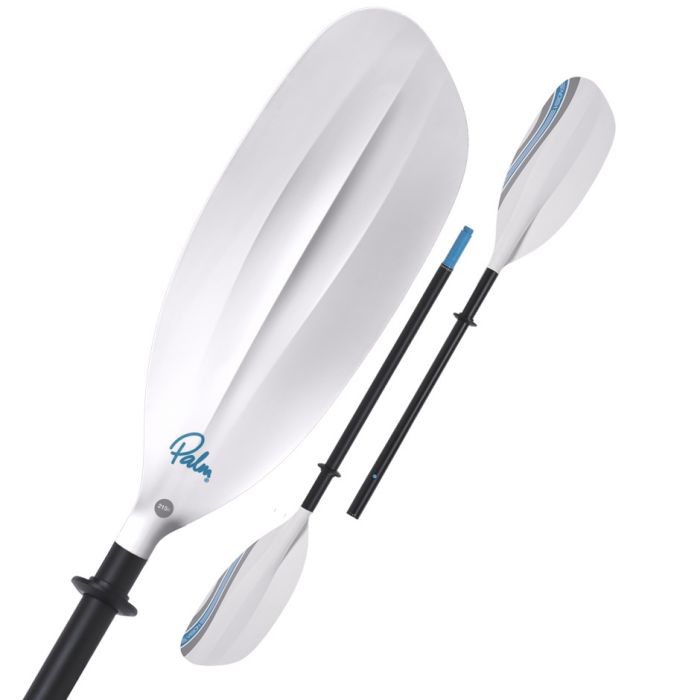Crossover kayaks are gaining popularity, and for good reason. Models like the Pyranha Fusion, Dagger Katana and Venture Flex are extremely versatile, offering a great balance of on the water performance and simple transport and storage. They’re easy to paddle and above all lots of fun!
In this blog we aim to answer the question which paddle is best for these kayaks?
Let’s start with length first:
Paddle length has an element of personal preference and making a selection it is important to consider several factors:
Boat Width - Fundamentally, the wider your craft the further away the water is and thus the longer a paddle will need to be. Crossover kayaks are generally mid width, aiming to give beginner and intermediate paddlers confidence. As such, the paddle length will reflect this, being longer than choices for narrow racing style kayaks but shorter than those used for sit on tops and inflatables.
Paddler Height - This second important factor is your height. Taller paddlers need a greater reach in order to place the blade in the water effectively and thus a longer paddle is beneficial.
High Vs Low Angle Blades - In a discussion around paddle length for crossover kayaks this is the least relevant of the three factors. In some ways to mention it is a little overkill but we thought it may be of interest to some of our customers. Kayak paddle blades come in a range of different shapes and are generally termed high or low angle. This simple relates to whether the shaft angle is steep (high angle) or shallow (low angle) when the blade enters the water. A steep angle results in a powerful stroke and is generally the preference of dynamic paddlers. The low angle style is much more relaxed and less energy intensive, so tends to lead to less fatigue after a long day on the water. The added benefit is that the non paddling blade stays low and doesn’t tend to drip water. In design terms a high angle model is shorter in length but deeper, while low angle blades are longer and shallower. The results of these differences in terms of paddle length is that you need a slightly longer paddle with low angle styles. This enables you to place the blade into the water at the correct angle.
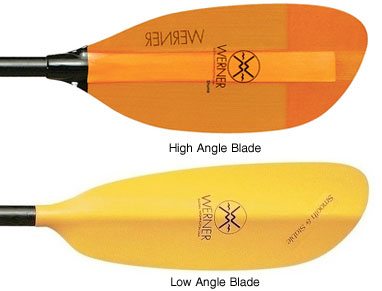
So, what is the result for your choice of crossover kayak paddle? We generally recommend a range from 195-220cm. This range will seem broad and reflects the impact of paddler height, as well as intended use. The latter is important to mention given the versatility and wide potential use of crossover kayaks. If you plan to paddle lots of moving water then a shorter high angle style will suit best. We'd recommend 200cm. Conversely, for those using the boat solely for flat water a longer more efficient option should be your choice and you should then look around 210cm. Now we have addressed length it is best to discuss the merits of different budgets.
What you get for your money?
Increasing budget will see four main impacts on the paddle:
- Weight - as we move up the price bands the weight of the paddle will decrease through the use of progressively lighter materials. Shafts will change from aluminium to glass and carbon, blades from nylon to glass and carbon. Although these changes may seem inconsequential on land, only a few hundreds grams here and there, the cumulative effect after a long day on the water should not be underestimated. This is especially true for petite and junior paddlers, who will tend to notice the difference to a greater effect.
- Stiffness - as well as reducing weight, the move toward more premium materials results in paddlers which are stiffer. As a general rule this is a good thing, ensuring your power is not lost through flex. Ultimately, we’re certain all paddlers would prefer to cover greater distances with less energy used.
- Split Joints - The vast majority of paddles in lengths over 210cm will be two piece for simple transport and storage. At a basic level the joint is secured using a simple push button. This system is absolutely fine but does tend to have a minor amount of play. In reality, when paddling this is not noticeable but as you move up the range the joint systems become more finessed and offer a greater degree of adjustment. Adjustment can either be the angle at which the blades are offset, called feather, or length. If you are choosing a shorter paddle (under 200cm) to paddle moving water these will generally be one piece for increased strength.
- Overall Quality - Increasing budget also results in an overall improvement in paddle finish, resulting from high production standards and a greater degree of development.
So which should you choose?
Although we hope this information is useful it is also clear that with so many paddles on the market it can still be overwhelming to make a decision. As such, our staff have selected their first choices in the main price ranges.
£50-100
In this price bracket the stand out option is the Palm Maverick, being one piece and suited to all round use but with a slant towards moving water. Key Features include:
- High angle design
- Glass shaft
- Glass filled plastic blades for stiffness and durability
- ovalised shaft for a comfortable grip
If you’re looking for a premium all rounder but plan to use your crossover kayak for touring then the Palm Drift Pro is difficult to argue against and the 215-220cm length adjustment useful for many paddlers. The glass shaft is light weight, with glass fill blades offering a stiffness increase. Key features include:
- Fibreglass shaft
- Drip rings to reduce water splash
- Leverlock 2 piece joint with length adjustment
- Plastic blades for durability
Available in 194, 197 and 200cm:
https://www.roho.co.uk/palm-maverick-g1-paddle-rh45
215-220cm, 220-225cm:
https://www.roho.co.uk/palm-drift-pro-paddle
£100+
Moving to this more premium price range sees the Palm Vision 2 piece as a stand out model. The glass shaft and glass filled blades again keeps the weight to a minimum, while increasing stiffness. We love that this paddles uses the Werner licensed joint. This is brilliant in that the mechanism uses interlocking teeth for a super secure fit, while micro adjustment to blade offset lets you achieve the perfect feather.Key features include:
- Fibreglass shaft
- Drip rings to reduce water splash
- Werner licensed interlocking 2 piece joint
- glass filled plastic blades for stiffness and durability
210, 215 and 220cm:
https://www.roho.co.uk/palm-vision-2-piece-paddle
CONCLUSION
Choosing the right paddle can make or break your day and our staff encourage customers never to underestimate the effect of reduced weight and increased rigidity. We hope this information is useful but if in doubt please contact us for a recommendations based on your circumstances.
Get in touch here or on 01924 444888












